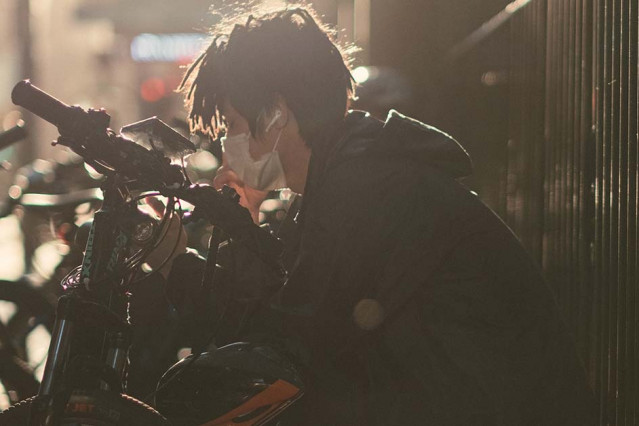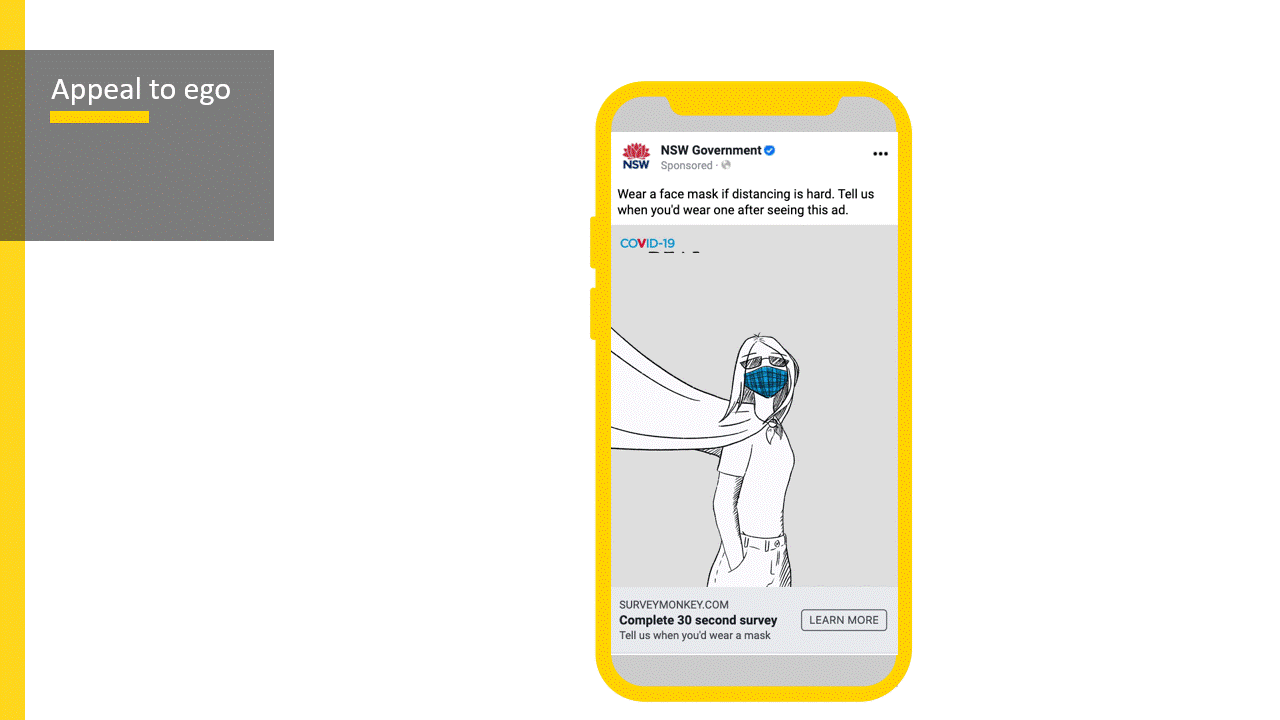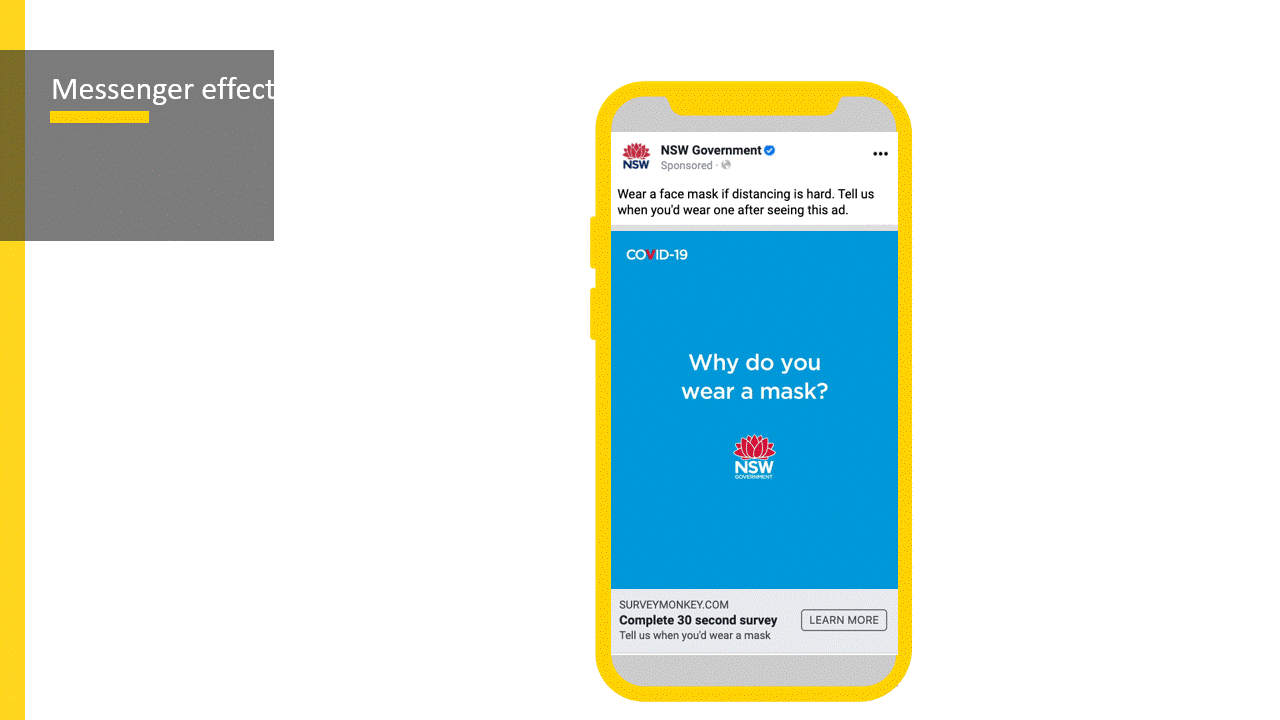How to encourage young people to wear face masks
We increased the likelihood for young people to voluntarily wear a mask, using an animation campaign on social media that appealed to ego and a positive self-image.

Face masks recently became mandated in New South Wales in public venues that are indoors. However, the NSW Government also encourages (but does not mandate) mask use in other settings, where physical distancing may not be possible. Our findings can be used to promote mask-use in these cases, where face masks are still optional.
While we wait for a vaccine, behavioural change is key to slowing the spread of COVID-19. While behaviours such as handwashing aren’t so new to us, others, such as mask wearing, are less familiar and are harder take on.
We now know that face mask compliance is critical in reducing the spread, especially in those places where it’s not always possible to socially distance. Mandating masks in Melbourne led to increased mask use, from 43% (when recommended but not mandated) to 97%. This was associated with a decrease in the rate of COVID-19 infections by between 22 and 33. From 3 January 2021, New South Wales (NSW) made mask wearing mandatory in indoor public settings, such as in shopping centres, public transport, airports and planes, hair and beauty salons, in indoor entertainment venues, and places of worship.
Additionally, the NSW Government encourages (but does not mandate) mask use in other settings where this may help reduce community transmission (such as where it is not possible to keep 1.5 metres away from others). In this case, behaviourally informed framing of public messages can boost voluntary mask use.
It’s important that messages are tailored to their audience for maximum effect, especially for those groups who are resistant to masks or don’t see COVID-19 as a risk to them – such as young people. So, what messaging works best?
What we did
We worked with the DCS NSW Government Brand and Campaigns team to test what works best to motivate young people to wear masks. We selected two behaviourally informed Facebook ads to encourage mask wearing. These were specifically tailored to young people.
We used a simple A/B test (PDF 130.08KB) to test the most effective message. Almost 150,000 Facebook users aged between 18-29 were randomly shown one of two videos:
1. Animation
The animation was a young person wearing a mask and a cape with the message ‘real heroes wear masks’.
Why? This is an appeal to ego. We’re more likely to engage in a behaviour if it makes us feel better about ourselves and is consistent with a positive self-image.

2. Vox pops
A compilation of vox pops with young people, who spoke about why they wear a mask.
Why? This used a messenger effect. We’re more likely to be influenced by a message when the messenger is similar to us.
Recipients were then invited to complete a survey, which asked how likely they would be to wear a mask the next time they entered public transport and a shop or supermarket.

What worked best?
- The animation led to a 10% increase in the proportion of respondents who would definitely or probably wear a mask on public transport compared to the vox pop. This was highly statistically significant (p=0.007).
- The animation also led to a 5% increase in the proportion of respondents who would definitely or probably wear a mask in shops (66%) compared to the vox pop (63%). This was not statistically significant but that may be because of the small number of survey respondents.
- The animation also led to more ‘engagement’ than the vox pop, with more reactions and survey completions.
What did we learn?
- Our simple A/B test suggests that connecting masks with a positive social identity could encourage young people to wear them.
- There were multiple differences between the two ads – for example, one was animated and one wasn’t. More testing could help us understand what components of the animation were most effective and which components of the vox pop didn’t resonate.
Published: 25 January 2021